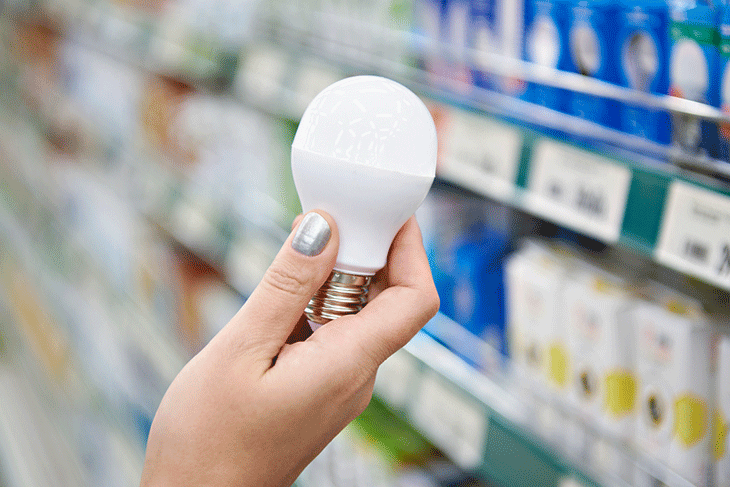
Tips for Getting the Best Light Bulbs to Save on Your Next Bill
Did you know that energy savings on your electricity bill could be as simple as getting new light bulbs? Here are a few tips on getting the best light bulbs to save on your next bill.
What is the Most Energy Efficient Light Bulb?
The easiest way to identify energy efficient light bulbs is to look for ENERGY STAR® certified bulbs. According to the official ENERGY STAR® website, a certified light bulb brand offers benefits like:
Overall energy cost-savings over 12 years
High-quality light distribution, similar, if not better, than traditional light bulbs
Lighting material designed to minimize environmental impact
Availability and affordability at major brands and retailers
There is no single “best” light bulb for your home, and the answer depends on your lighting usage and aesthetic preferences. However, looking for official ENERGY STAR® certified lighting products is the first step in the right direction
Best Light Bulbs for Energy Savings
According to the US Department of Energy, the best types of light bulbs to buy are:
- Halogen Incandescents
- CFLs
- LEDs
Traditional incandescent light bulbs create visible light when the filament inside is heated with electrical current, and the amount of energy needed to generate this light is measured in watts. The problem with traditional bulbs is that longer-lasting bulbs or brighter light requires thicker filaments, which then consume more energy.
Fortunately, newer light bulbs address these problems by offering solutions that both increase light output while conserving electricity overall.
Halogen Incandescents
Halogen incandescent bulbs closely mimic the light output of a traditional incandescent bulb, while using about 25% less energy. These bulbs are perfect for lamps that use dimmers, and they come in a variety of colors including soft white, natural white, and clear.
Compact Fluorescent Lamps (CFLs)
Compact fluorescent lamps, or CFLs, feature a recognizable and iconic curl-shape. CFL bulbs are the smaller version of the fluorescent lights you may already associate with industrial lighting. Since a traditional 60W CFL consumes up to 75% less energy, the savings are big, and with more colors available now than ever before, homeowners can find a bulb that gives them their desired lighting quality.
LEDs
The most popular type of energy-efficient light bulb, light-emitting diode (LED) lights, offer both cost savings and cozy aesthetics. LEDs are a flexible lighting choice, and you can find them in a wide variety of wattages, shapes, and colors. Instead of electrical current passing through a filament, the current passes through a microchip, which then illuminates the light source. Additionally, they generate very little heat when compared to CFLs and halogen incandescents.
If you’re wondering much money can you save by switching to LED light bulbs, consider that a 60W traditional LED uses about 75% to 80% less energy than a traditional incandescent. While the initial investment in the bulb may be more costly, the accrued energy savings pay for the bulb itself in only a few months.
Energy Efficient Light Bulb Cost Savings
According to an article by the U.S. Department of Energy, energy-efficient light bulbs will typically consume up to 20% to 80% less energy and last up to 25 times longer than a traditional bulb. With these calculations, the average American household can save up to $75 a year on their energy bill, just by making smarter lighting choices!
Learn more about our home energy plans.
Also Read:
Water Heater tips to Save on Hot Water Costs



